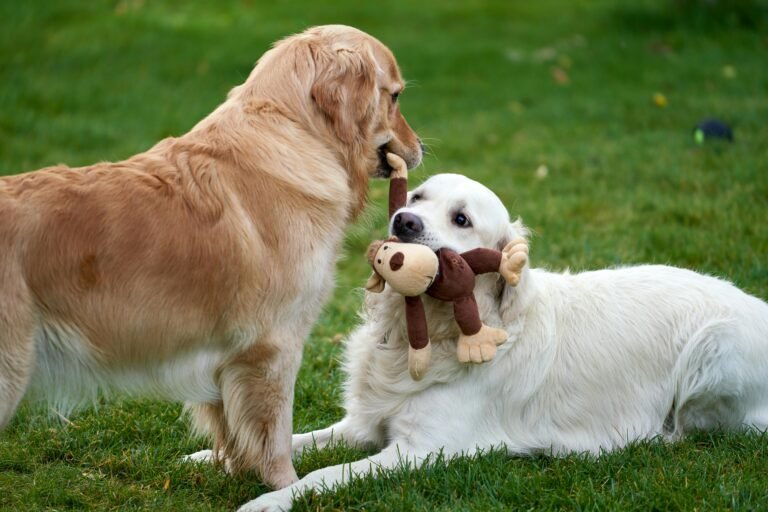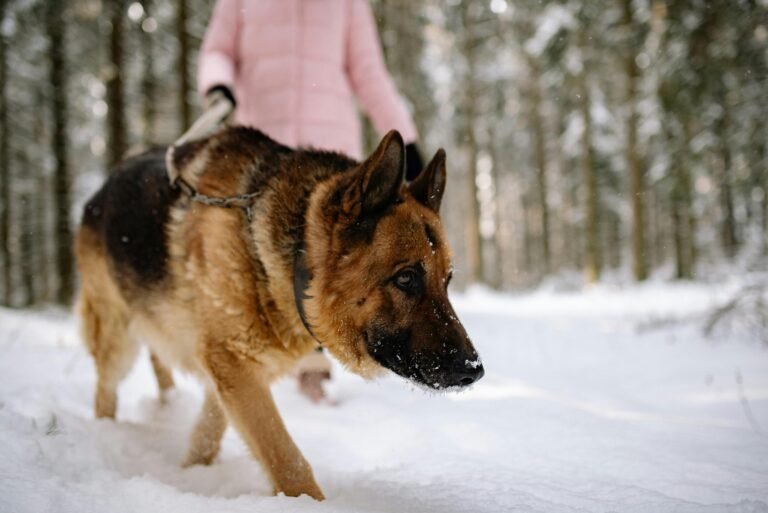Introduction
Every dog owner knows the sight of a wagging tail — it’s the universal sign of a happy pup… or is it? While most people assume a wag always means joy, canine tail language is far more complex. A dog’s tail is like an emotional barometer — revealing excitement, fear, curiosity, confidence, or even aggression. By learning to read the subtle variations in wag direction, speed, and posture, you can better understand what your dog is truly feeling and communicate with them on a deeper level.
Why the Tail Is a Window Into a Dog’s Mind
Dogs rely on body language far more than vocal sounds to express themselves. The tail plays a central role in this “silent conversation.” It helps signal intentions to other dogs and provides social cues to humans. Tail movements are controlled by muscles linked directly to the spinal cord and emotional centers in the brain — meaning tail movement isn’t random; it’s a direct reflection of how your dog feels in the moment.
In essence: the tail is your dog’s emotional antenna.
The Basics: Tail Position and What It Means
Before analyzing wags, start by understanding tail position. Every breed has a natural resting position (for example, Greyhounds carry tails low while Pomeranians hold them high). Compare your dog’s signals to their usual posture, not to other breeds.
- Tail held high: Alert, confident, or dominant. The dog is paying attention and asserting presence.
- Tail level with the back: Relaxed and comfortable, a neutral or content state.
- Tail slightly low or relaxed curve: Calm and submissive, typical of a friendly, easygoing mood.
- Tail tucked between legs: Fear, anxiety, or submission. The dog is seeking safety or appeasement.
- Tail stiff and upright: Potential agitation or challenge — often accompanied by raised hackles.
Tail height communicates confidence level — the higher the tail, the more assertive the emotional state; the lower, the more cautious or insecure.
The Wag Spectrum: Speed, Direction, and Rhythm
A wag isn’t just a wag — scientists have found that dogs wag differently depending on their emotional context. The direction and speed of a wag can reveal whether your dog feels friendly, nervous, or alert.
1. Broad, loose wag (full body sway)
This is the classic “happy dog” wag. The movement is relaxed, often involving the entire rear end. It says, “I’m friendly and comfortable.” You’ll see this when greeting family members or during playtime.
2. Fast, narrow wag (tense body)
This wag indicates heightened arousal — not necessarily happiness. It could mean excitement, stress, or agitation. If combined with stiff posture, raised hackles, or intense staring, it’s a warning sign rather than joy.
3. Slow wag (medium height)
A slow, deliberate wag usually signals uncertainty or caution. The dog is evaluating a situation, unsure how to react. You might see this when introducing your dog to a new person or environment.
4. Circular “helicopter” wag
When your dog’s tail spins in big circles — think of a helicopter blade — that’s the ultimate happy greeting. It’s often reserved for their favorite humans or friends after a separation.
5. Low-speed, low-tail wag
Gentle, low wags can indicate submission or appeasement. It’s your dog’s way of saying, “I’m friendly and not a threat.” Often seen when greeting dominant dogs or new people.
The Left vs. Right Wag Mystery
Did you know the direction of your dog’s wag matters? Neuroscientists have discovered that dogs wag more to the right when they feel positive and more to the left when anxious or uncertain. This asymmetry links to how emotions are processed in the brain:
- Right-side wag: Positive feelings — happiness, approach behavior.
- Left-side wag: Negative feelings — caution, withdrawal, or unease.
While you won’t notice this with every wag, paying attention to subtle direction shifts can reveal emotional nuance, especially in stressful situations like vet visits or unfamiliar encounters.
Breed Differences and Tail Types
Tail language can vary depending on breed and tail shape. Dogs with curly, docked, or plume-like tails communicate differently.
- Curly tails (e.g., Shiba Inu, Pug): Harder to read — look for small movements and overall body language.
- Docked tails (e.g., Doberman, Boxer): Limited expression — rely more on ear position, stance, and facial cues.
- Feathered tails (e.g., Golden Retrievers): Highly expressive — every wag or lift conveys emotion.
Because of these variations, always consider the full-body picture rather than focusing on the tail alone.
Reading the Tail in Context
A tail signal doesn’t mean much on its own. It’s the context — environment, body posture, facial expression — that completes the message. Here are a few common combinations and what they mean:
- High tail + stiff body + focused stare: Guarding or assertive — approach cautiously.
- Low tail + lowered body + ears back: Fearful or submissive — needs reassurance, not discipline.
- Neutral tail + relaxed mouth + open stance: Happy and secure — perfect play mood.
- Slow wag + tilted head: Curious or confused — waiting for your cue or command.
By learning to read combinations, you’ll develop an intuitive understanding of your dog’s emotions in real time.
Common Misinterpretations
Not every wag equals friendliness — that’s one of the most dangerous myths. Many bite incidents occur because people approach dogs who are wagging, assuming they’re friendly. A wag can also signal excitement, agitation, or warning, depending on how it’s carried out.
Rule of thumb: If the wag is high, tight, and fast with stiff posture — proceed with caution.
How to Respond to Different Tail Signals
- Loose, happy wag: Match your dog’s energy — smile, speak in a friendly tone, and engage.
- Slow or hesitant wag: Stay calm and reassuring. Give space until your dog feels secure.
- Stiff or high wag: Maintain neutral posture, avoid direct eye contact, and don’t crowd the dog.
- Tucked tail: Offer gentle comfort — crouch low, avoid loud voices, and create distance from stressors.
Tail Language Between Dogs
Dogs use their tails to communicate with one another just as much as with humans. A confident, upright tail signals dominance, while a low or tucked tail signals submission. During play, you’ll often see exaggerated tail movements paired with play bows and bouncy steps — clear signs of friendliness. Dogs also rely on tail cues to decide whether to approach or back off, making tail communication vital for canine social harmony.
Training Tip: Watch, Don’t Assume
When you observe your dog’s tail language, do so without assuming human emotion. Instead, watch how the tail moves relative to the rest of the body and in what situation. Over time, you’ll start recognizing individual quirks — like how your dog wags differently for favorite people versus new dogs. That’s the magic of truly understanding your companion.
Conclusion
Your dog’s tail speaks volumes — you just have to learn the language. By paying attention to its position, speed, and context, you can better interpret your dog’s emotions and needs. This understanding doesn’t just prevent miscommunication — it deepens your bond. The next time your dog’s tail wags, don’t just see it as a blur of fur — see it as a sentence in a language of love, trust, and emotion that only grows richer the more you listen.



